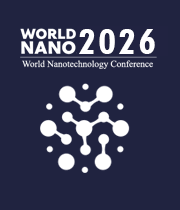Title : Cellulose-derived biochar modified with iron oxide and ZnO nanoparticles by a novel one-step pyrolytic method for removal of emerging contaminants from water
Abstract:
In this work, we prepared cellulose-derived biochar embedded with iron oxide (Fe2O3 and Fe3O4) nanoparticles and zinc oxide (ZnO) nanorods (hedgehog, or pall with nanoneedle-assembled shell shape) using a novel one-step pyrolytic method under nitrogen flow for the removal of emerging perfluoroalkyl (PFAS) contamination from water. The Structural, morphological, elemental, textural, optical, and magnetic properties of the prepared materials have been studied using several techniques, such as X-ray diffraction (XRD), scanning electron microscopy (SEM), transmission electron microscopy (TEM), energy dispersive X-ray spectroscopy (EDS), X-ray photoelectron spectroscopy (XPS), Brunauer-Emmett-Teller (BET), UV-vis, and vibrating-sample magnetometer (VSM). Antibacterial properties of the prepared materials have also been studied using zone inhibition and Minimum Inhibitory Concentration (MIC) tests. The dual modification integrates Fe active sites, which enhance electrostatic interactions and impart magnetic properties for easy recovery, with ZnO sites that provide Lewis acidity, surface charge control, and UV-activated photocatalytic activity. Under UV/near-UV irradiation, the ZnO phase (band gap about 3.2 eV) generates reactive species (•OH, •O??) responsible for oxidative degradation of PFAS and other organic pollutants. Additionally, the biochar/Fe3O4/ZnO sample exhibited superparamagnetic behaviour, allowing efficient magnetic separation and regeneration, as well as visible-light absorbance enhancement due to synergistic Fe–ZnO coupling. The biochar-iron-zinc oxide nanocomposite materials have a large surface area of over 1000 m2/g and high porosity, making them suitable for purifying water and air from various pollutants.



